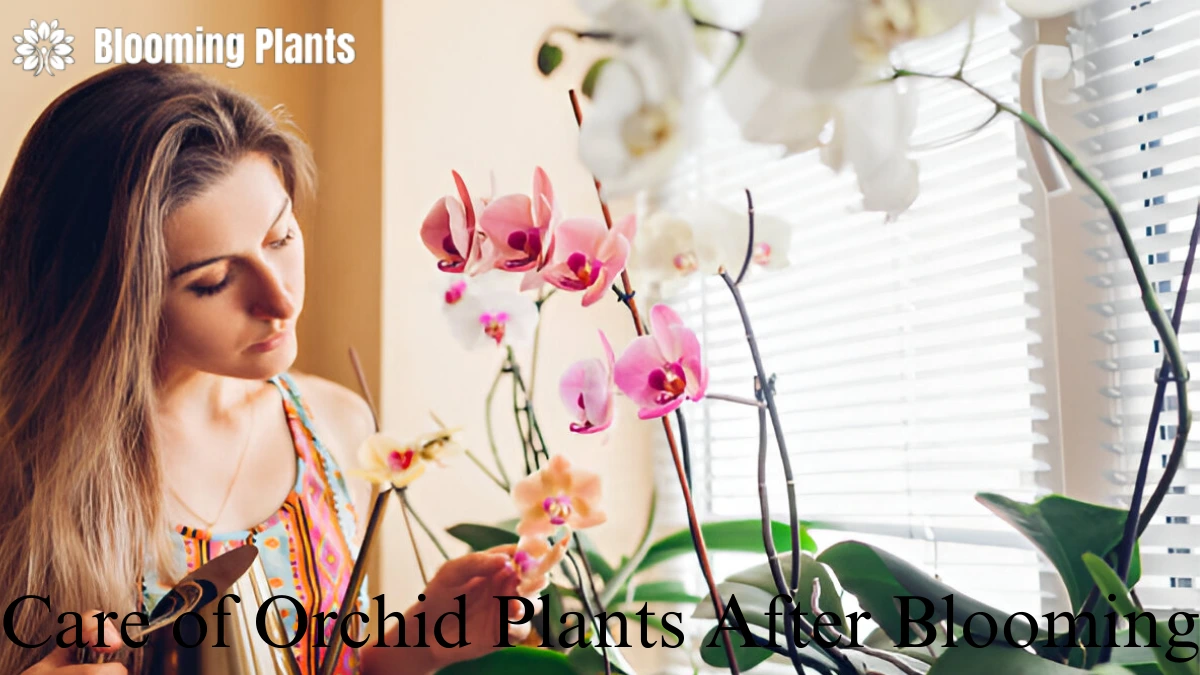1. Understanding Post- Care of Orchid Plants After Blooming
Why Post-Care of Orchid Plants After Blooming
Care of Orchid Plants After Blooming require special attention after they finish blooming. Proper post-bloom care not only ensures the health of the plant but also encourages future flowering. Neglecting this phase can lead to stunted growth or even plant death, so it’s vital to take timely measures.
The Natural Orchid Blooming Cycle
Orchids typically bloom once or twice a year, with blooms lasting several weeks. After the flowers fade, the plant enters a resting phase. During this period, the orchid conserves energy to prepare for the next bloom cycle. Understanding this natural rhythm is key to providing appropriate care.
2. Pruning Orchid Stems and Flowers
When to Prune of Care of Orchid Plants After Blooming
Once the flowers have faded and dropped, it’s time to prune the plant. Check the flower spike for signs of green nodes. If the spike is still green, you can leave it intact for potential reblooming. If it has turned brown or yellow, it should be cut back to the base.
How to Prune Properly of Care of Orchid Plants After Blooming
Use sterilized scissors or pruning shears to cut the spike about an inch above the node or at its base if it’s entirely brown. Be gentle to avoid damaging the plant. Regular pruning ensures that the plant directs its energy toward healthy growth and future blooms.
3. Adjusting Watering and Humidity
Reducing Watering Frequency
After blooming, orchids enter a dormant phase and require less water. Water the plant only when the top layer of the potting medium is dry. Overwatering during this phase can lead to root rot and fungal infections.
Maintaining Proper Humidity of Care of Orchid Plants After Blooming
Orchids thrive in environments with 50-70% humidity. Use a humidity tray or mist the plant regularly to maintain optimal levels. Avoid over-misting, as excessive moisture can lead to fungal issues.
4. Fertilizing During Dormancy
Choosing the Right Fertilizer
Switch to a balanced, diluted fertilizer during the dormant phase. A 20-20-20 fertilizer diluted to half strength works well. Avoid high-nitrogen fertilizers, as they can hinder flower production.
How Often to Fertilize
Apply fertilizer every 3-4 weeks during dormancy. This provides the nutrients needed for the plant to store energy for its next blooming cycle. Reduce fertilization further during the colder months.
5. Repotting Orchids After Blooming
Identifying the Need for Repotting
Orchids should be repotted every 1-2 years or when the potting medium breaks down. Signs that your orchid needs repotting include overcrowded roots, poor drainage, and visible salt deposits on the medium.
Steps to Repot an Orchid
- Remove the orchid from its current pot and gently shake off old potting material.
- Trim any dead or rotting roots using sterilized scissors.
- Place the plant in a new pot with fresh orchid-specific potting mix.
- Water lightly and place the plant in a shaded area to recover.
6. Providing Adequate Light
Light Requirements Post-Bloom
Orchids need bright, indirect light to recover and grow. Place them near an east or south-facing window for optimal exposure. Avoid direct sunlight, as it can scorch the leaves.
Using Artificial Lighting
If natural light is insufficient, consider using grow lights to supplement. LED grow lights are a great option for maintaining the health of orchids indoors.
7. Common Post-Bloom Orchid Problems
Yellowing Leaves
Yellow leaves may indicate overwatering or insufficient light. Adjust your watering schedule and ensure the plant receives adequate, indirect light.
Pests and Diseases
Inspect the plant regularly for signs of pests like spider mites or scale insects. Use neem oil or insecticidal soap to address infestations promptly.
Stunted Growth
Stunted growth can result from nutrient deficiencies or poor light conditions. Adjust fertilization and light exposure to promote healthy growth.
8. Encouraging Reblooming
Mimicking Natural Conditions
To encourage reblooming, replicate the orchid’s natural environment. Reduce nighttime temperatures by 10-15°F for a few weeks to trigger flower spikes.
Monitoring Growth Stages
Keep an eye on new growth, such as leaves and roots. Healthy growth indicates that the plant is storing enough energy to produce new blooms.
9. Selecting Orchid Varieties for Reblooming
Popular Reblooming Orchids
Phalaenopsis (moth orchids) are among the easiest to rebloom. Other varieties, such as Dendrobiums and Oncidiums, also respond well to proper post-bloom care.
Customizing Care for Each Variety
Different orchid species have specific care requirements. Research the needs of your orchid variety to tailor your post-bloom care routine accordingly.
Conclusion
Proper care of orchid plants after blooming ensures they remain healthy and vibrant, ready to produce flowers again. By focusing on pruning, watering, fertilizing, and repotting, you can enjoy the beauty of orchids year after year. With patience and attention, reblooming orchids can become the crown jewel of your indoor or outdoor garden.
FAQs
- When should I prune my orchid after blooming? Prune the flower spike when it turns brown or yellow to encourage healthy growth.
- How often should I water my orchid after it blooms? Water only when the potting medium is dry to prevent overwatering.
- Do all orchids rebloom? Most orchids, like Phalaenopsis, can rebloom with proper care, but some varieties may require specific conditions.
- Should I fertilize my orchid during dormancy? Yes, use a diluted balanced fertilizer every 3-4 weeks during dormancy.
- How can I encourage my orchid to rebloom? Mimic natural conditions by reducing nighttime temperatures and providing adequate light and nutrients.

